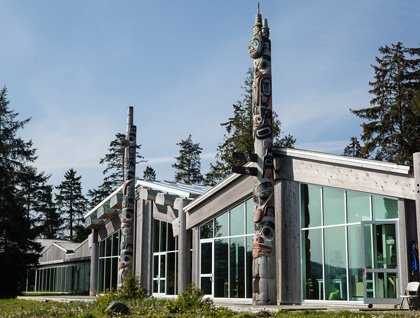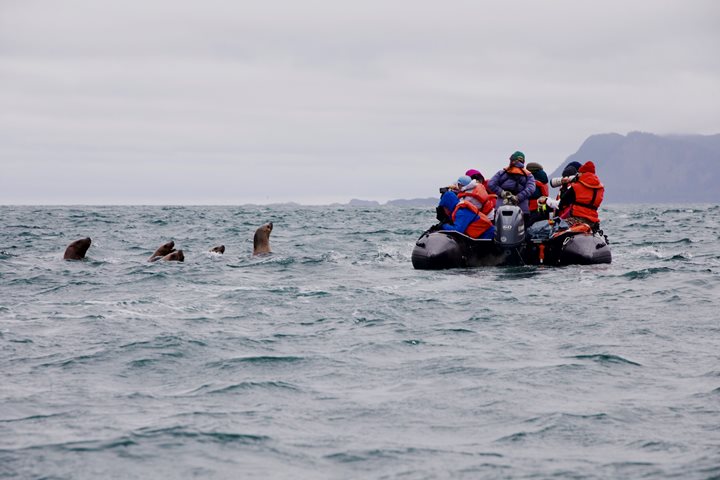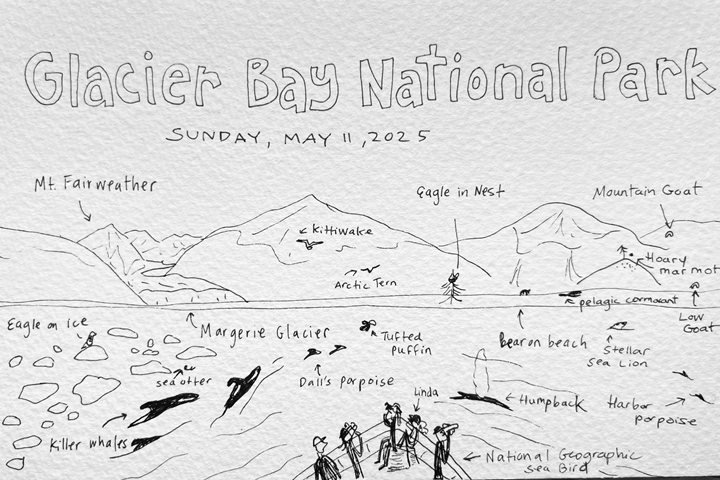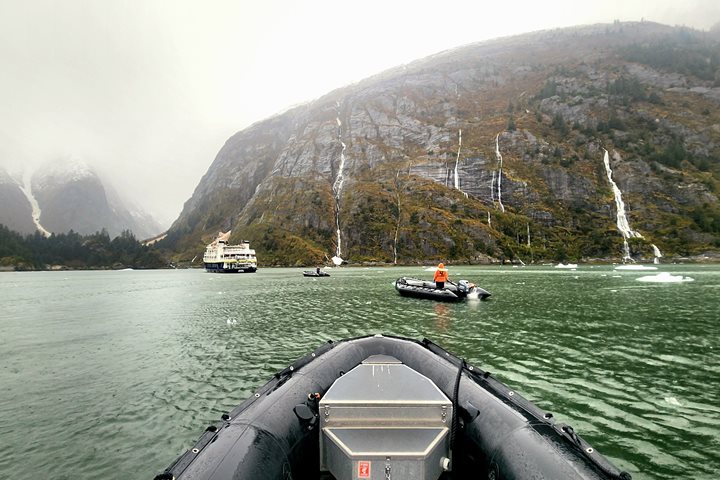After a night of smooth sailing across the gentle waters of Hecate Strait, we awoke approaching the harbor of Queen Charlotte City. This quiet harbor town was our introduction to the people of the Eagle and the Raven, the islands of Haida Gwaii. It is an area rich in culture, art, and history. The Haida have lived in these islands for more than 12,500 years. Their lineage and cultural stories have been passed down orally for centuries. According to Elsie Stewart-Barton, the onboard Haida representative that joined us today, there is no Haida word for “art.” Art as we think of it is simply an expression of their deep connections to their heritage, to the land, waters and wildlife that bring richness to their home area.
Though not called by a name, art is prevalent throughout this culture and several modern-day Haida artists are well known and respected in international art circles. This morning, to acquaint ourselves with the history and art of Haida Gwaii, we visited the Haida Heritage Centre in Skidegate, where we saw seaside totem poles and a diverse collection of carvings, weavings, and cultural artifacts. As we set off toward the southern islands of the archipelago, Elise led a chorus of an old Haida paddling song that had the whole ship singing.
With the sun descending over mountainous islands to our west, with clouds of purple and pink rising above, we came to an unexpected grand finale for an already great day. For more than an hour, we were surrounded by humpback whales. We watched them lunge feeding, diving, and breaching while large groups of sooty shearwaters flew all around feasting on the krill that attracted them all to this area. The beautiful symphony of birds and whales dancing in the pink light of the evening is a picture that will surely be playing over in our minds as we drift to sleep, gently rocked by the motion of the National Geographic Sea Lion’s continued journey to the southern islands of Haida Gwaii.







